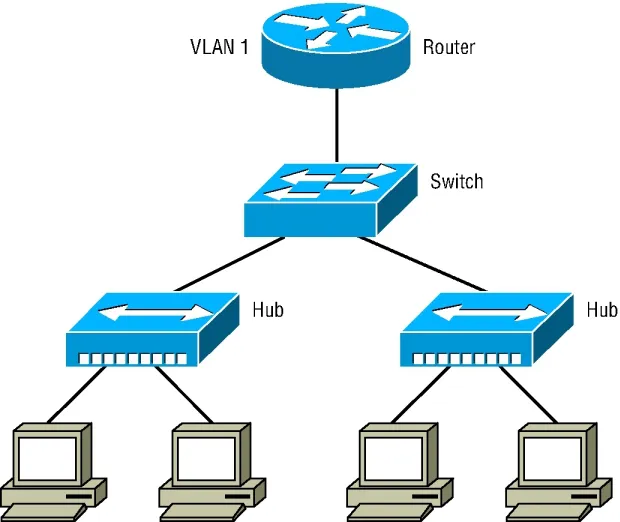
CCNA Certification Practice Tests
Exam 200-301
Jon Buhagiar
- English
- ePUB (mobile friendly)
- Available on iOS & Android
CCNA Certification Practice Tests
Exam 200-301
Jon Buhagiar
About This Book
The definitive study guide for the new CCNA and CCNP certifications
CCNA Certification Practice Test: Exam 200-301 is the definitive practice guide for professionals preparing for the new CCNA or CCNP certifications, and for those looking to master the latest technologies in Cisco networking fundamentals. The practice exams, written by 17-year industry professional Jon Buhagiar, explore a broad range of exam objectives essential for passing the certification exam.
The CCNA exam provides the certification needed to grow your IT career. Each practice exam in this book is designed to prepare you to pass the CCNA by imparting the skills, knowledge, and practical coursework needed to master all exam topics.
This book includes access to six practice tests featuring 1, 200 exam questions, as well as two full practice exams. Most importantly, the six practice tests featured in Certification Practice Tests Exam 200-301 cover a variety of topics, including:
- Security fundamentals
- Automation and programmability
- IP services
- IP connectivity
- Network success
- Network fundamentals
In addition to a plethora of exam topics and plenty of sample questions to prepare you for the CCNA exam, readers will also have access to online test tools featuring additional practice questions and study tools to assist in reinforcing the knowledge you've gained with the book.
Learn the foundational knowledge you need to pass the CCNA or CCNP and take your career to the next level by preparing with CCNA Certification Practice Tests.
Frequently asked questions
Information
Chapter 1
Network Fundamentals (Domain 1)
- ✓ 1.1 Explain the role and function of network components
- 1.1.a Routers
- 1.1.b L2 and L3 switches
- 1.1.c Next-generation firewalls and IPS
- 1.1.d Access points
- 1.1.e Controllers (Cisco DNA Center and WLC)
- 1.1.f Endpoints
- 1.1.g Servers
- ✓ 1.2 Describe characteristics of network topology architectures
- 1.2.a 2 tier
- 1.2.b 3 tier
- 1.2.c Spine-leaf
- 1.2.d WAN
- 1.2.e Small office/home office (SOHO)
- 1.2.f On-premises and cloud
- ✓ 1.3 Compare physical interface and cabling types
- 1.3.a Single-mode fiber, multimode fiber, copper
- 1.3.b Connections (Ethernet shared media and point-to-point)
- 1.3.c Concepts of PoE
- ✓ 1.4 Identify interface and cable issues (collisions, errors, mismatch duplex, and/or speed)
- ✓ 1.5 Compare TCP to UDP
- ✓ 1.6 Configure and verify IPv4 addressing and subnetting
- ✓ 1.7 Describe the need for private IPv4 addressing
- ✓ 1.8 Configure and verify IPv6 addressing and prefix
- ✓ 1.9 Compare IPv6 address types
- 1.9.a Global unicast
- 1.9.b Unique local
- 1.9.c Link local
- 1.9.d Anycast
- 1.9.e Multicast
- 1.9.f Modified EUI 64
- ✓ 1.10 Verify IP parameters for Client OS (Windows, Mac OS, Linux)
- ✓ 1.11 Describe wireless principles
- 1.11.a Nonoverlapping Wi-Fi channels
- 1.11.b SSID
- 1.11.c RF
- 1.11.d Encryption
- ✓ 1.12 Explain virtualization fundamentals (virtual machines)
- ✓ 1.13 Describe switching concepts
- 1.13.a MAC learning and aging
- 1.13.b Frame switching
- 1.13.c Frame flooding
- 1.13.d MAC address table
- How many broadcast domains are present in the network in the following exhibit?

- One broadcast domain
- Two broadcast domains
- Three broadcast domains
- Seven broadcast domains
- How many potential collision domains are present in the network in the following exhibit?

- One collision domain
- Two collision domains
- Three collision domains
- Seven collision domains
- Which statement is true about collision domains?
- All computers in the collision domain have the potential to have a frame collision.
- All computers in the collisi...